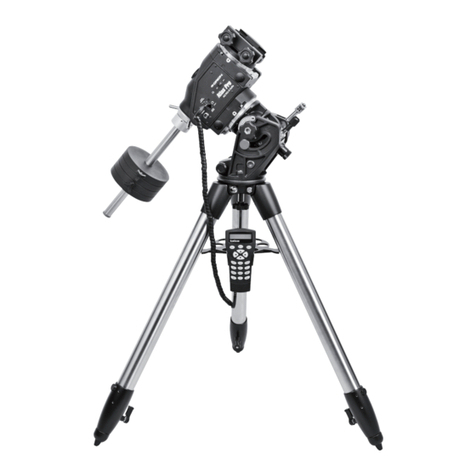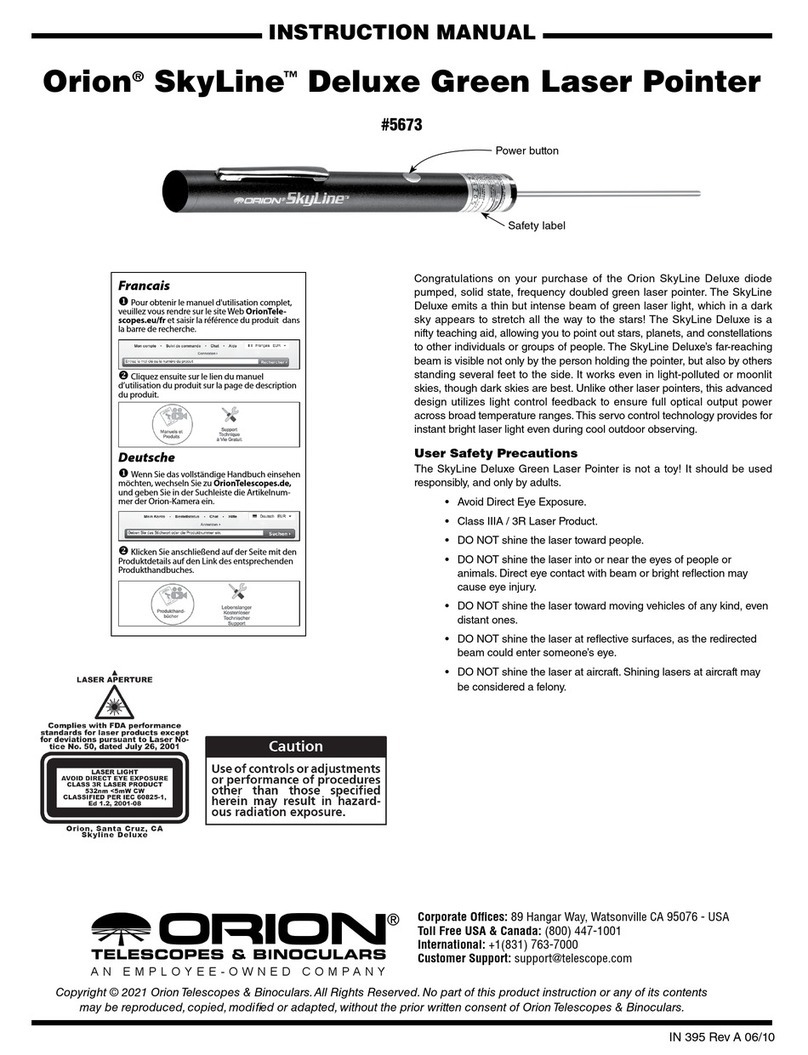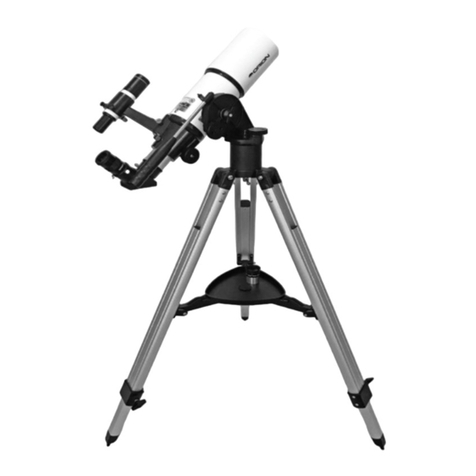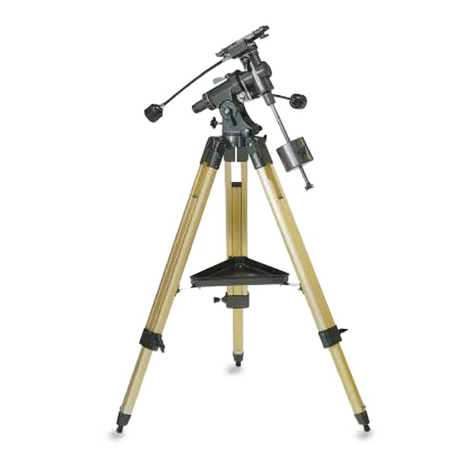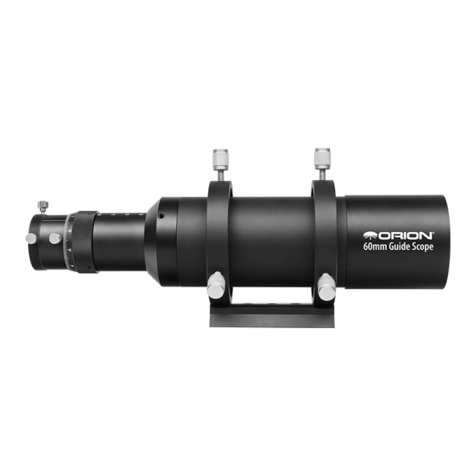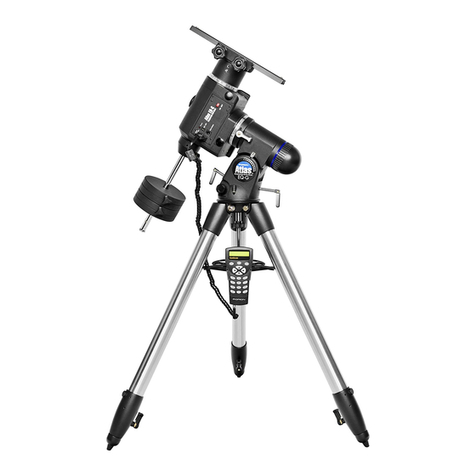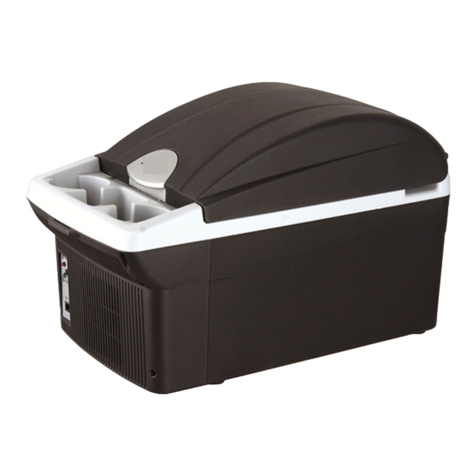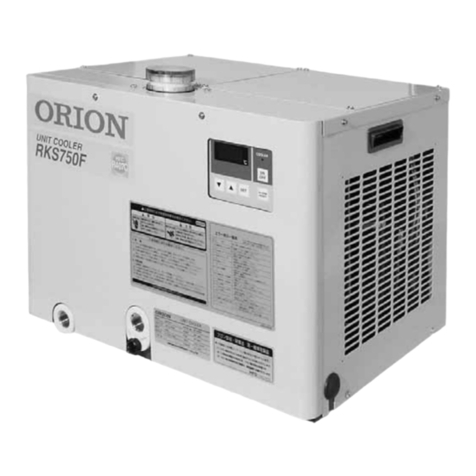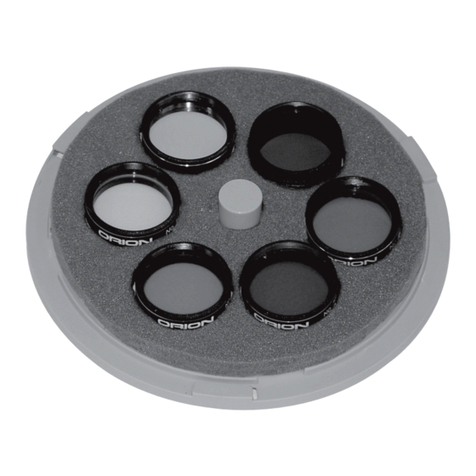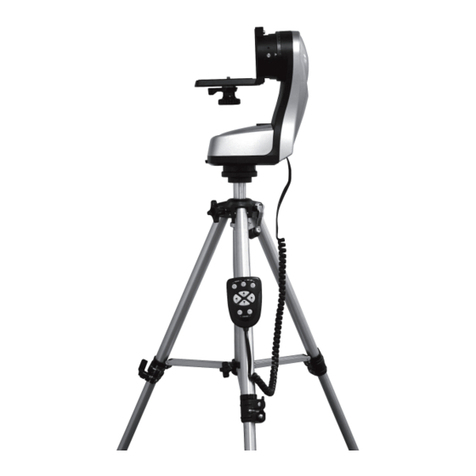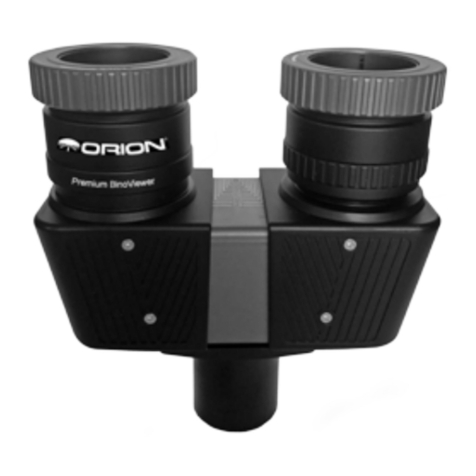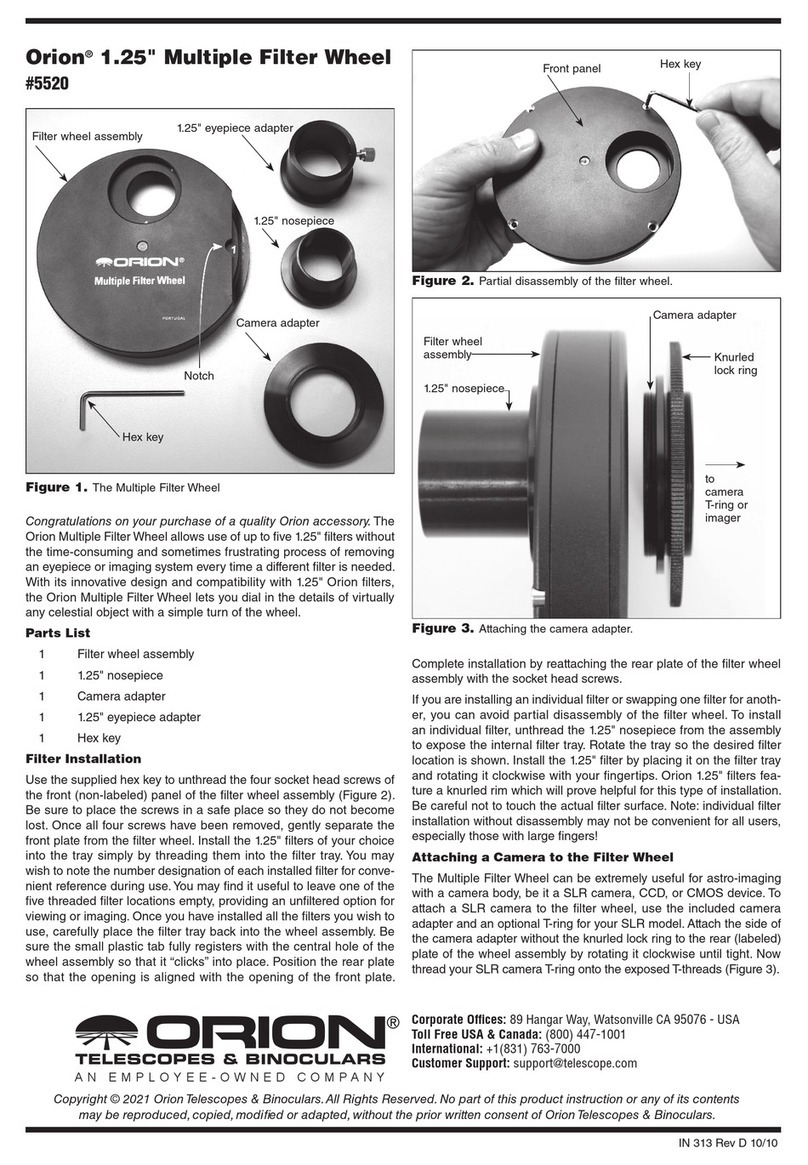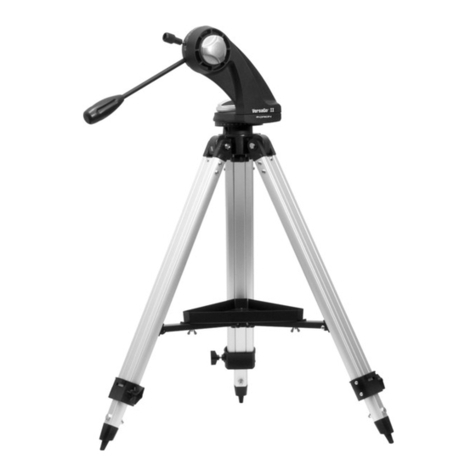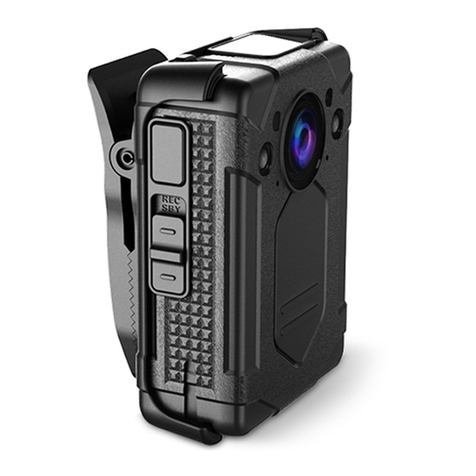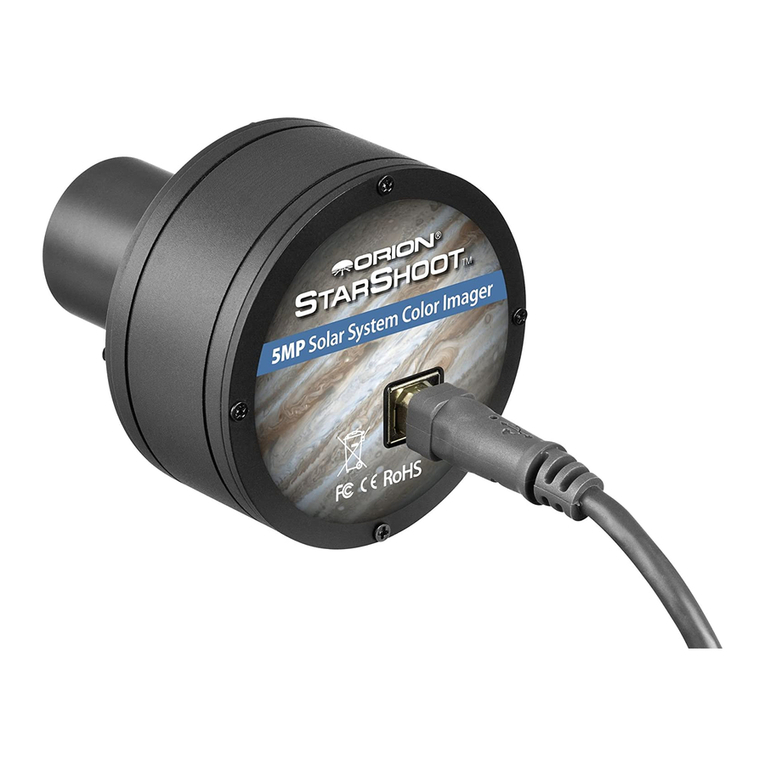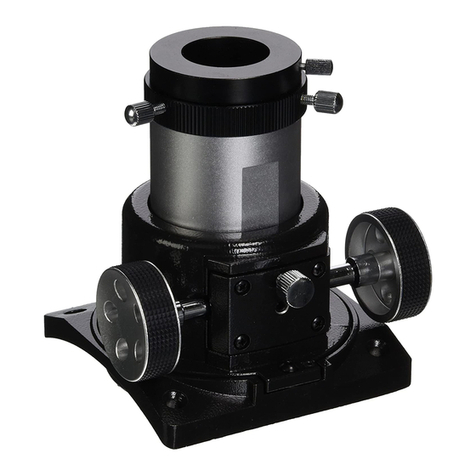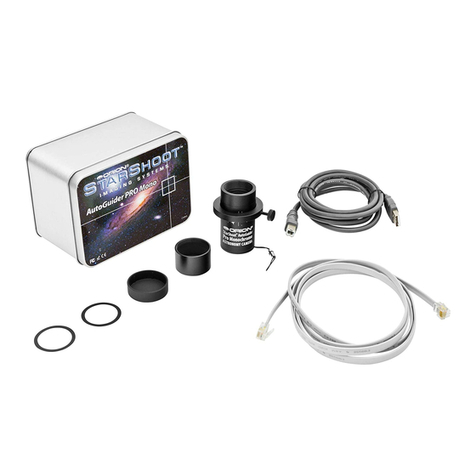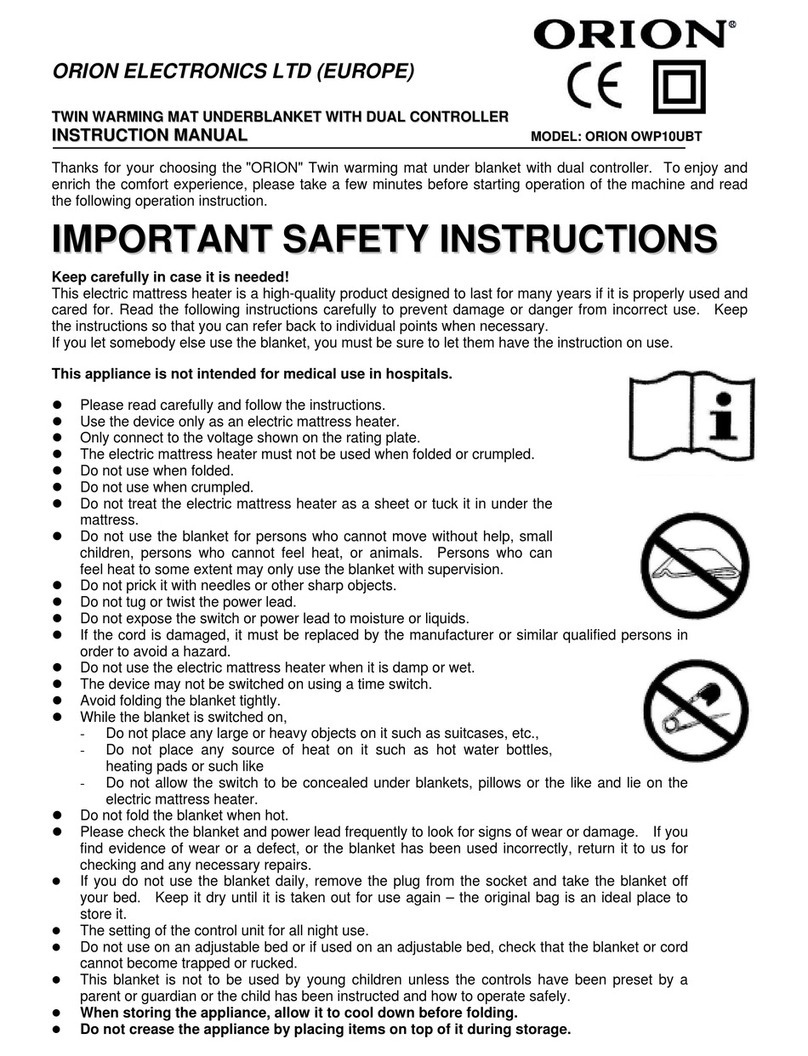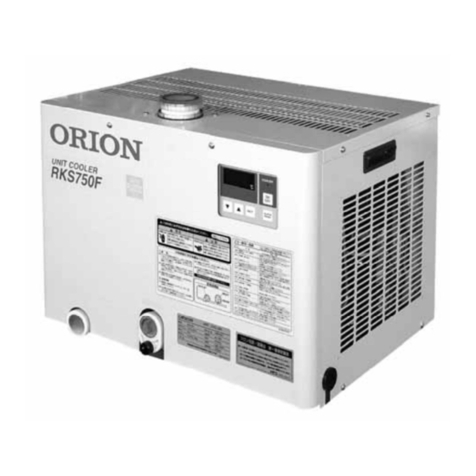
8
The Dec. slow-motion control cable can move the telescope
a maximum of 25°. This is because the Dec. slow-motion
mechanism has a limited range of mechanical travel. (The
R.A. slow-motion mechanism has no limit to its amount of
travel.) If you can no longer rotate the Dec. control cable in a
desired direction, you have reached the end of travel, and the
slow-motion mechanism should be reset. This is done by first
rotating the control cable several turns in the opposite direc-
tion from which it was originally being turned. Then, manually
slew the telescope closer to the object you wish to observe
(remember to first loosen the Dec. lock thumb screw). You
should now be able to use the Dec. slow-motion control cable
again to fine adjust the telescope’s position.
Tracking Celestial Objects
When you observe a celestial object through the telescope,
you’ll see it drift slowly across the field of view. To keep it in
the field, if your equatorial mount is polar-aligned, just rotate
the R.A. slow-motion control. The Dec. slow-motion control is
not needed for tracking. Objects will appear to move faster at
higher magnifications, because the field of view is narrower.
Optional Motor Drives for Automatic Tracking and
Astrophotography
An optional DC motor drive (EQ-1M) can be mounted on the
R.A. axis of the EQ-1 Equatorial Mount to provide hands-free
tracking. Objects will then remain stationary in the field of view
without any manual adjustment of the R.A. slow-motion con-
trol. The motor drive is necessary for astrophotography.
If mounting only a DSLR camera with lens on the mount, note
that the included 5-lb. counterweight could interfere with, i.e.,
contact, the motor drive when the camera is pointed in certain
orientations. To avoid this problem, you should replace the
5-lb. counterweight with the narrower, 2.1-lb. counterweight
(#7398, sold separately). With this counterweight there is
complete clearance from the motor drive in any camera
orientation.
Understanding the Setting Circles
The setting circles on an equatorial mount enable you to
locate celestial objects by their “celestial coordinates.” Every
astronomical object resides in a specific location on the “celes-
tial sphere.” That location is denoted by two numbers: its right
ascension (R.A.) and declination (Dec.). In the same way,
every location on Earth can be described by its longitude and
latitude. R.A. is similar to longitude on Earth, and Dec. is simi-
lar to latitude. The R.A. and Dec. values for celestial objects
can be found in any star atlas or star catalog.
So, the coordinates for the Orion Nebula listed in a star atlas
will look like this:
R.A. 5h 35.4m Dec. -5° 27'
That’s 5 hours and 35.4 minutes in right ascension, and -5
degrees and 27 arc-minutes in declination (the negative sign
denotes south of the celestial equator). There are 60 minutes
in 1 hour of R.A and there are 60 arc-minutes in 1 degree of
declination.
The mount’s R.A. setting circle is scaled in hours, from 1
through 24, with small hash marks in between representing 10
minute increments. The numbers closest to the R.A. axis gear
apply to viewing in the Southern Hemisphere, while the num-
bers above them apply to viewing in the Northern Hemisphere.
The Dec. setting circle is scaled in degrees, with each small
hash mark representing 2.5°.
Before you can use the setting circles to locate objects, the
mount must be well polar aligned, and the setting circles must
be calibrated. The declination setting circle was calibrated at
the factory, and should read 90° when the telescope optical
tube is parallel with the R.A. axis.
Calibrating the Right Ascension
Setting Circle
1. Identify a bright star near the celestial equator and look up
its coordinates in a star atlas.
2. Loosen the R.A. and Dec. lock thumb screws on the equa-
torial mount, so the telescope optical tube can move freely.
3 Point the telescope at the bright star near the celestial
equator whose coordinates you know. Center the star in
the telescope’s field of view. Lock the R.A. and Dec. lock
thumb screws.
4. Rotate the R.A. setting circle so the pointer indicates the
R.A. listed for the bright star in the star atlas.
Finding Objects With the Setting Circles
Now that both setting circles are calibrated, look up in a star
atlas the coordinates of an object you wish to view.
1. Loosen the Dec. lock thumb screw and rotate the tele-
scope until the Dec. value from the star atlas matches the
reading on the Dec. setting circle. Retighten the lock thumb
screw. Note: If the telescope is aimed south and the Dec.
setting circle pointer passes the 0° indicator, the value on
the Dec. setting circle becomes a negative number.
2. Loosen the R.A. lock thumb screw and rotate the telescope
until the R.A. value from the star atlas matches the reading
on the R.A. setting circle. Retighten the lock thumb screw.
Most setting circles are not accurate enough to put an object
dead-center in your finder scope’s field of view, but they’ll get
you close, assuming the equatorial mount is accurately polar-
aligned. The R.A. setting circle should be re-calibrated every
time you wish to locate a new object. Do so by calibrating the
setting circle for the centered object before moving on to the
next one.
Confused About Pointing the Telescope?
Beginners occasionally experience some confusion about how
to point the telescope overhead or in other directions. In Figure
1 the telescope is pointed north as it would be during polar
alignment. The counterweight shaft is oriented downward. But
it will not look like that when the telescope is pointed in other
directions. Let’s say you want to view an object that is directly
overhead, at the zenith. How do you do it?

